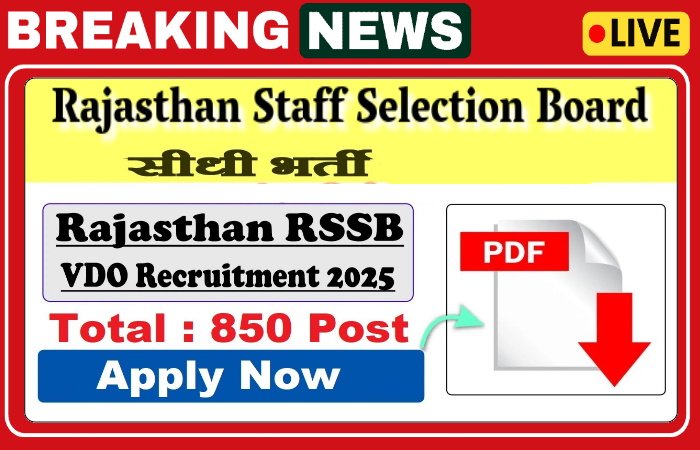
In India, land records are crucial documents that provide comprehensive information about a piece of land, including ownership, cultivation details, and any associated liabilities. These records are maintained by the respective State/Union Territory (UT) Revenue Departments. The digitization of land records under initiatives like the Digital India Land Records Modernization Programme (DILRMP) has made it significantly easier for citizens to access these documents online. One of the most important land documents is the Record of Rights (RoR), also known by various regional names like Jamabandi (in Haryana, Punjab, Himachal Pradesh), 7/12 Utara (in Maharashtra), Khatauni (in Uttar Pradesh, Bihar, Rajasthan), Patta (in Tamil Nadu), Porcha (in West Bengal), Adangal/1B (in Andhra Pradesh/Telangana)
What is a Record of Rights (RoR)?
The Record of Rights (RoR) is a fundamental legal document that provides detailed information about a land parcel. It serves as prima facie evidence of land ownership and is essential for all property-related transactions and legal matters.
Key Information Contained in an RoR:
While the format and specific terminology may vary slightly from state to state, a typical RoR document generally includes:
- Ownership Details:
- Name(s) of the current owner(s) or recorded occupants.
- Father’s/Husband’s name of the owner.
- Address of the owner.
- Details of joint ownership, if any.
- History of ownership transfers (mutations).
Land Description:
- Survey number (Khasra No.) or plot number.
- Village, Tehsil (Taluka), and District where the land is located.
- Total area of the land (in hectares, acres, gunthas, etc.).
- Land classification (e.g., agricultural, non-agricultural, barren, residential, commercial).
- Boundaries and dimensions of the land.
Usage Rights and Liabilities:
- Nature of the land use (e.g., irrigated, un-irrigated).
- Crops cultivated on agricultural land (if applicable).
- Details of tenancy or cultivation rights, if the land is leased.
- Any outstanding loans, mortgages, or encumbrances on the land.
- Charges of attachment and decrees by civil courts or revenue authorities.
Taxation Information:
- Records of land revenue or property tax paid by the owner.
- Any other cess or taxes levied on the land.
Mutation Details:
- References to mutation entries that record changes in ownership, inheritance, or land use.
Importance and Benefits of RoR and Online Land Records:
Having access to updated land records, especially the RoR, offers numerous benefits:
Proof of Ownership: The RoR is a crucial legal document to establish and prove ownership of a specific piece of land.
Facilitates Property Transactions: It ensures transparency in buying, selling, or inheriting property by allowing buyers to verify the seller’s rightful ownership and check for any liabilities or disputes.
Prevents Disputes: Clear and updated records help prevent and resolve land disputes by providing accurate, official details about ownership and usage.
Access to Credit/Loans: Banks and financial institutions often require the RoR as collateral for loans (e.g., agricultural loans, home loans).
Government Schemes and Subsidies: It is required for availing various government schemes, agricultural subsidies, loan waivers, etc.
Tax Calculation: Local governments use RoR to calculate and collect land revenue or property taxes accurately.
Legal Proceedings: Essential evidence in any legal proceedings related to land.
Digital Accessibility (Online Portals):
- Ease of Access: Citizens can access land records from the comfort of their homes, eliminating the need for physical visits to government offices.
- Transparency and Reduced Corruption: Online access minimizes human interface, reducing opportunities for corruption and bureaucratic red tape.
- Time-Saving: Reduces the time required to obtain land-related documents.
- Accuracy: Digital records aim for higher accuracy and are less prone to tampering compared to physical registers.
- Real-time Information: Many portals provide near real-time updates on land records, including mutations.
How to Access State/UT Land Records and RoR Online (General Process):
Due to the state-specific nature of land records, the exact steps and portal names vary. However, the general procedure is similar across most states and UTs:
Identify Your State’s Official Land Records Portal:
Each state/UT has its own dedicated online portal for land records. Some common names include:
- Andhra Pradesh: http://meebhoomi.ap.gov.in/
- Jharkhand: https://jharbhoomi.jharkhand.gov.in
- Himanchal: https://himbhoomilmk.nic.in
- Tripura: https://jami.tripura.gov.in
- Manipur: https://louchapathap.nic.in
- Assam: https://revenueassam.nic.in
- Karnataka: https://landrecords.karnataka.gov.in/
- Gujarat: https://anyror.gujarat.gov.in/
- Maharashtra: https://bhulekh.mahabhumi.gov.in/
- Rajasthan: https://apnakhata.raj.nic.in/
- Tamil Nadu: https://eservices.tn.gov.in
- Uttar Pradesh: https://upbhulekh.gov.in
- Bihar: http://land.bihar.gov.in
- Haryana: https://jamabandi.nic.in
- Madhya Pradesh: https://mpbhulekh.gov.in
- Odisha: http://bhulekh.ori.nic.in
- Chhattisgarh: https://bhuiyan.cg.nic.in
- Uttarakhand: https://bhulekh.uk.gov.in
- Andaman & Nicobar: http://db.and.nic.in
- Telangana: https://dharani.telangana.gov.in
- Punjab: http://jamabandi.punjab.gov.in
Important Considerations:
- Digitally Signed vs. View-Only: While you can usually view and download a copy for information, a “digitally signed” RoR is often required for legal transactions. Check if your state’s portal offers this service online, sometimes for a nominal fee.
- Periodic Updates: Land records are dynamic. Ensure you are viewing the most current version. Any changes in ownership (due to sale, inheritance, gift, etc.) require “mutation” in the land records.
- Discrepancies: If you find any discrepancies or errors in the online RoR, you should immediately apply for correction at the local land revenue office (Tehsil/Taluka office)
FAQ
Q1. What is a Record of Rights (RoR)?
Ans:
A Record of Rights (RoR) is an official land record document that contains ownership, land use, cultivation details, and any legal rights or liabilities attached to a piece of land. It is essential for property transactions, loans, and legal purposes.

Ans:
- No, RoR is known by different names across various states such as:
- 7/12 (Satbara) in Maharashtra
- Jamabandi in Punjab and Haryana
- Khatauni in UP and Bihar
- Patta/Chitta in Tamil Nadu
- RTC in Karnataka
Though the names differ, the purpose remains the same.

Ans:
Yes. Most states and union territories have online land record portals where you can search and view RoR using your district, taluk, village, survey number, or owner name.

Ans:
Yes, a certified copy of RoR issued by a state portal or Tehsil office is a legally accepted proof of ownership for most civil and financial purposes.


Ans:
- You need to:
- Visit your state’s land records website (e.g., UP Bhulekh, Banglarbhumi)
- Enter location and plot details
- View RoR and click on download/print
Note: Some portals may require registration or Aadhaar authentication.

Ans:
You can request a correction online (if the portal allows) or visit your local Tehsil or Revenue office and file a correction application with supporting documents.





